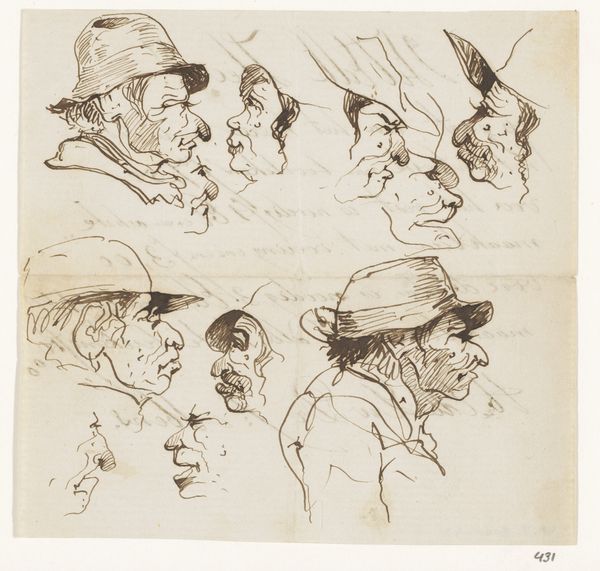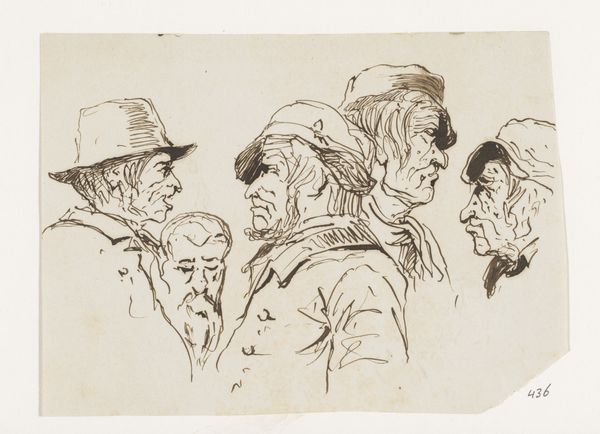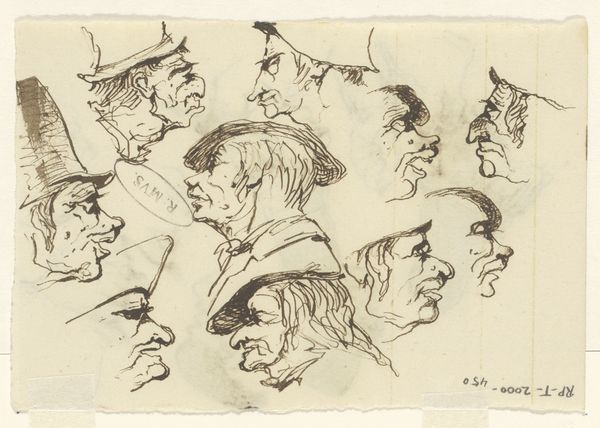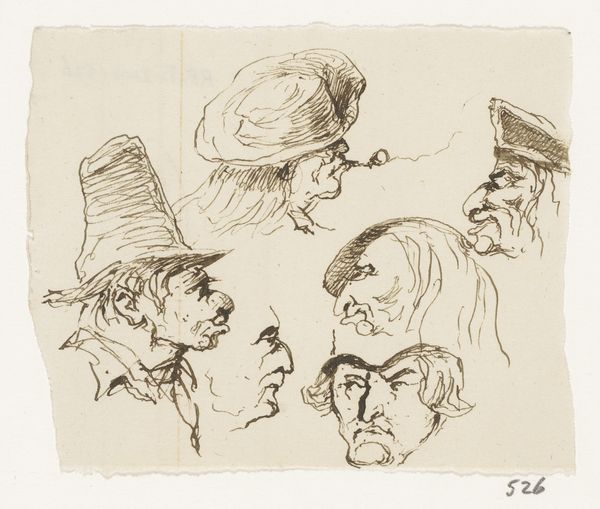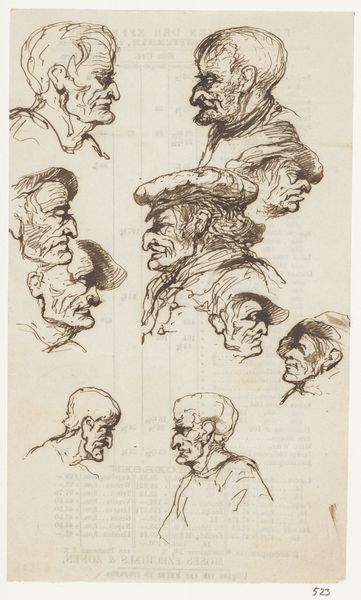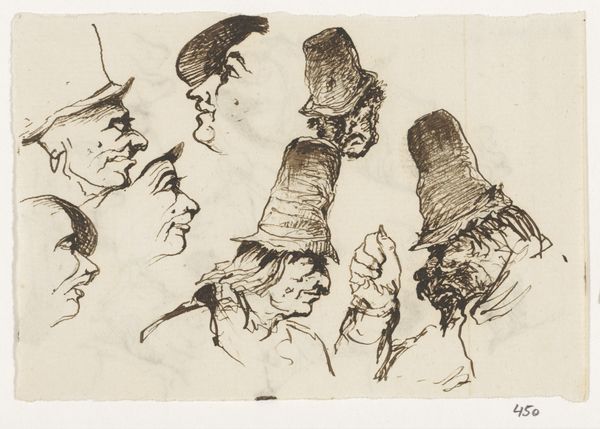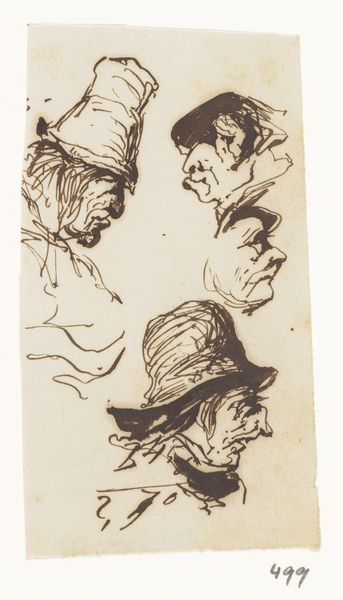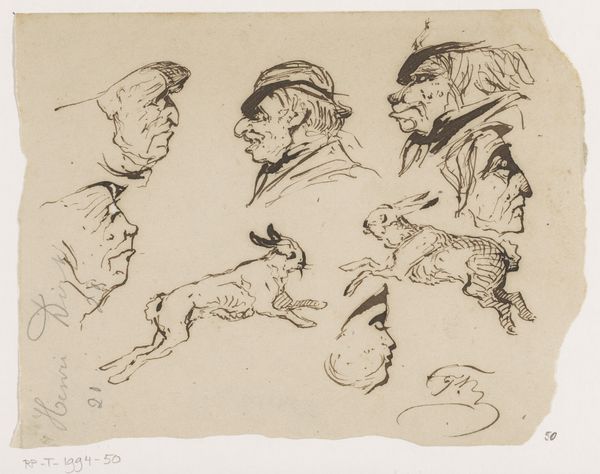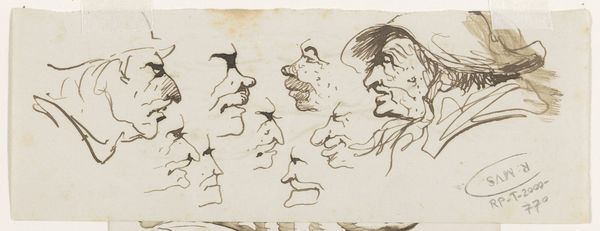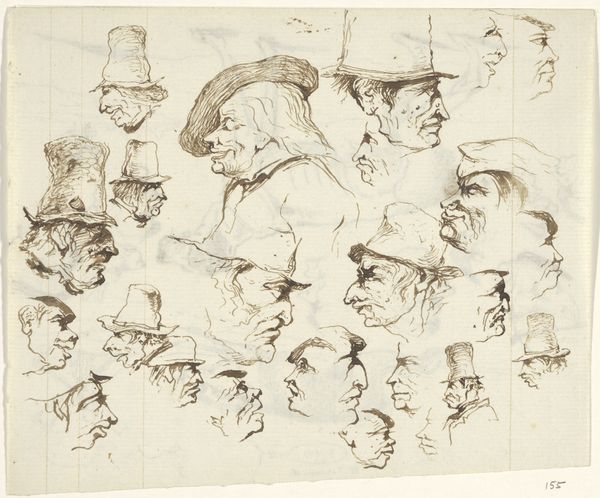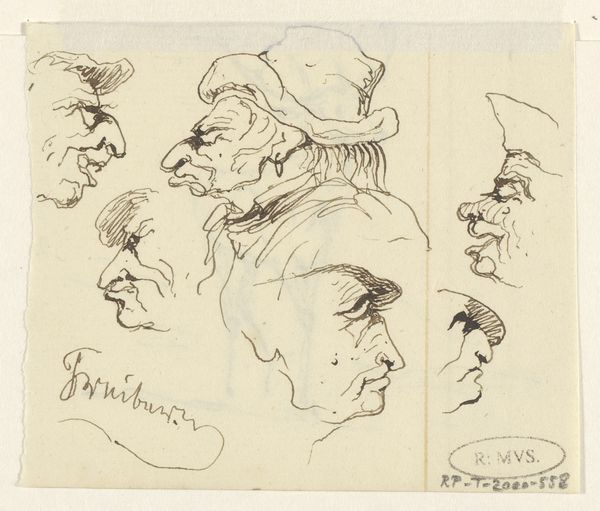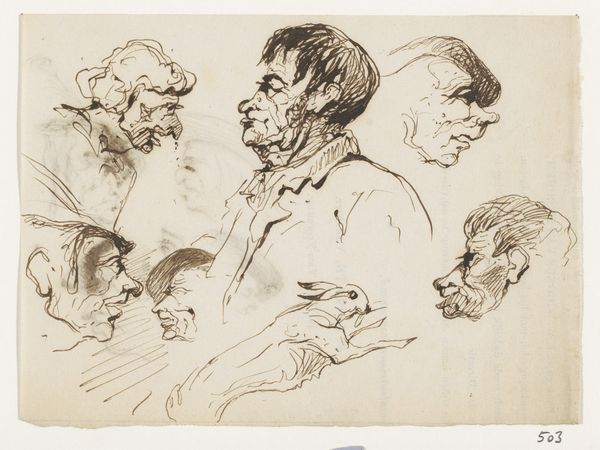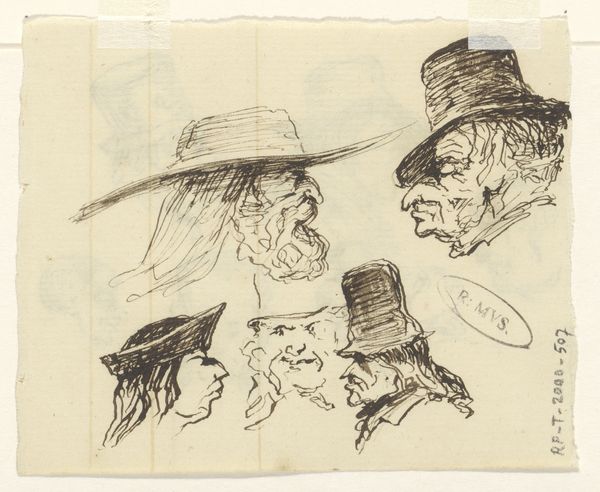
Dimensions: height 82 mm, width 100 mm
Copyright: Rijks Museum: Open Domain
Editor: We are looking at "Koppen," an ink drawing from somewhere between 1840 and 1880, by Johannes Tavenraat, in the Rijksmuseum collection. It shows a series of quirky faces, almost like caricatures. The quick, almost frantic line work makes the images jump out at you! What can you tell me about what you see in this drawing? Curator: What strikes me first is the dynamism achieved through the economy of line. Tavenraat utilizes contour and hatching, predominantly, to suggest form, volume, and even personality. The density of the lines varies, creating areas of visual interest. Consider the hats, for example; they aren't mere coverings but structural elements that give a peculiar status to their wearers. Note the repetition of certain shapes--the noses, in particular--which gives the composition a strong sense of visual unity. Editor: I notice the exaggerated noses, too. Is that kind of exaggeration a typical characteristic of caricature? Curator: Indeed. But more than caricature, I see a study in physiognomy, the belief that facial features reveal inner character. The artist isn't merely copying appearance but attempting to extract a visual essence. Ask yourself, how do the precise lines used to construct the faces influence our reading of them? Editor: So it's not just about the subject of the drawing but also about the artist’s choice of lines and shapes that tells us something? It's more than just simple sketches? Curator: Precisely! The relationships between line weight, form, and composition invite us to explore the inherent language of art itself, beyond mere representation. What do you take away from this deeper observation? Editor: I'm beginning to see how every choice contributes to the overall effect, and that the beauty isn't just in the representation, but in the artistic construction of that representation. I see the relationship now. Thank you!
Comments
No comments
Be the first to comment and join the conversation on the ultimate creative platform.

